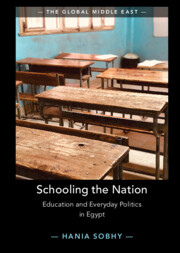Book contents
- Schooling the Nation
- The Global Middle East
- Schooling the Nation
- Copyright page
- Contents
- Figures
- Acknowledgements
- Note on Transliteration
- Introduction: Schools as Sites of Lived and Imagined Citizenship
- 1 The Late Mubarak Era, Education and the Research
- 2 Living the Intensities of the Privatized State: Informal Marketization across the System
- 3 Everyday Violence and Punishment in the Schools
- 4 Gendered Noncompliance and the Breakdown of Discipline
- 5 Nationalism, Belonging and Citizenship in Official Textbooks
- 6 Performing the Nation, Imagining Citizenship: School Rituals and Oppositional Non-belonging
- 7 What Has Changed in Education Since the Revolution?
- Conclusion
- Bibliography
- Index
- References
Bibliography
Published online by Cambridge University Press: 16 March 2023
- Schooling the Nation
- The Global Middle East
- Schooling the Nation
- Copyright page
- Contents
- Figures
- Acknowledgements
- Note on Transliteration
- Introduction: Schools as Sites of Lived and Imagined Citizenship
- 1 The Late Mubarak Era, Education and the Research
- 2 Living the Intensities of the Privatized State: Informal Marketization across the System
- 3 Everyday Violence and Punishment in the Schools
- 4 Gendered Noncompliance and the Breakdown of Discipline
- 5 Nationalism, Belonging and Citizenship in Official Textbooks
- 6 Performing the Nation, Imagining Citizenship: School Rituals and Oppositional Non-belonging
- 7 What Has Changed in Education Since the Revolution?
- Conclusion
- Bibliography
- Index
- References
Summary
- Type
- Chapter
- Information
- Schooling the NationEducation and Everyday Politics in Egypt, pp. 231 - 259Publisher: Cambridge University PressPrint publication year: 2023
- Creative Commons
- This content is Open Access and distributed under the terms of the Creative Commons Attribution licence CC-BY-NC 4.0 https://creativecommons.org/cclicenses/



